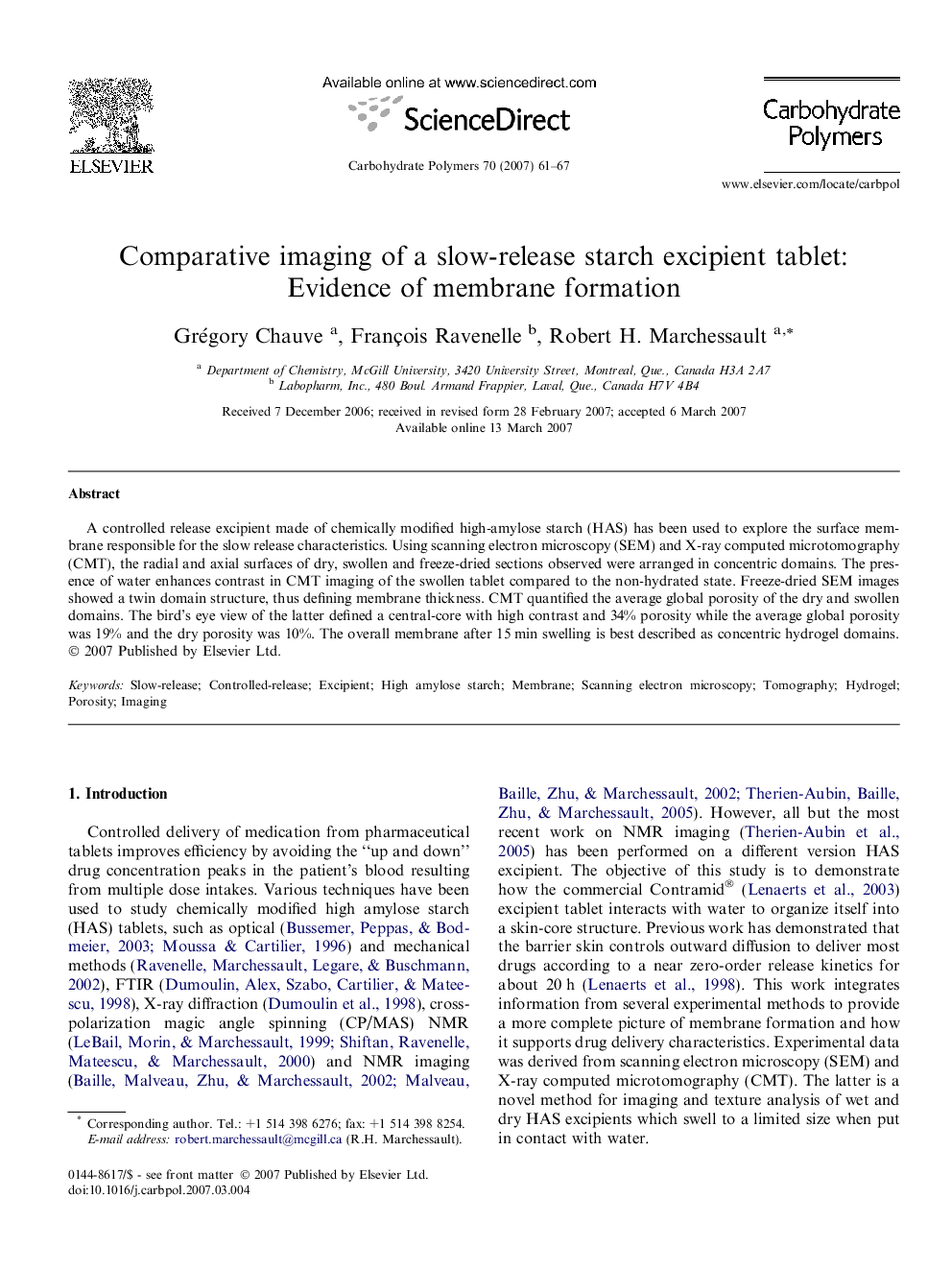| Article ID | Journal | Published Year | Pages | File Type |
|---|---|---|---|---|
| 1385181 | Carbohydrate Polymers | 2007 | 7 Pages |
Abstract
A controlled release excipient made of chemically modified high-amylose starch (HAS) has been used to explore the surface membrane responsible for the slow release characteristics. Using scanning electron microscopy (SEM) and X-ray computed microtomography (CMT), the radial and axial surfaces of dry, swollen and freeze-dried sections observed were arranged in concentric domains. The presence of water enhances contrast in CMT imaging of the swollen tablet compared to the non-hydrated state. Freeze-dried SEM images showed a twin domain structure, thus defining membrane thickness. CMT quantified the average global porosity of the dry and swollen domains. The bird's eye view of the latter defined a central-core with high contrast and 34% porosity while the average global porosity was 19% and the dry porosity was 10%. The overall membrane after 15Â min swelling is best described as concentric hydrogel domains.
Keywords
Related Topics
Physical Sciences and Engineering
Chemistry
Organic Chemistry
Authors
Grégory Chauve, François Ravenelle, Robert H. Marchessault,
